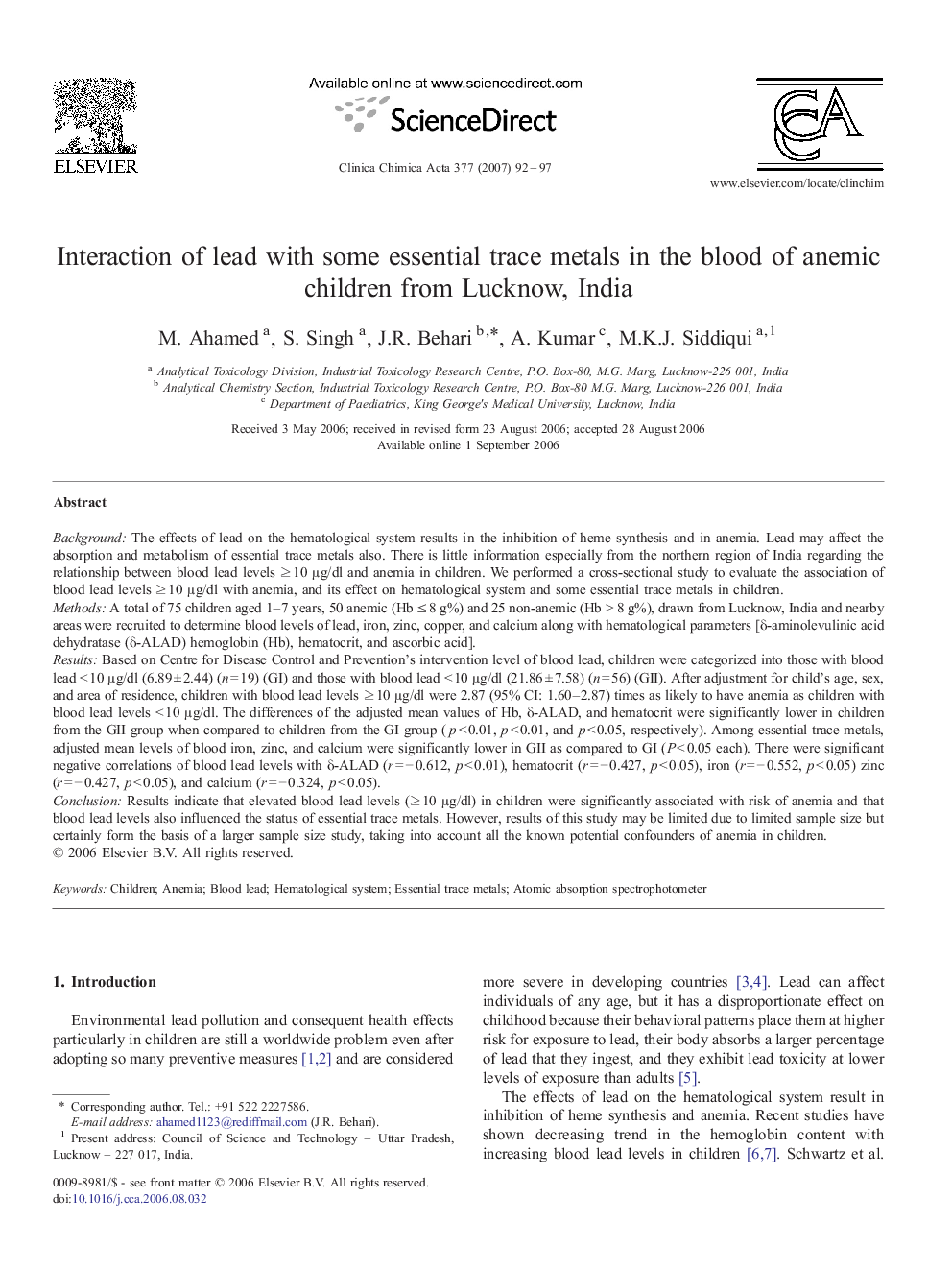| Article ID | Journal | Published Year | Pages | File Type |
|---|---|---|---|---|
| 1967686 | Clinica Chimica Acta | 2007 | 6 Pages |
BackgroundThe effects of lead on the hematological system results in the inhibition of heme synthesis and in anemia. Lead may affect the absorption and metabolism of essential trace metals also. There is little information especially from the northern region of India regarding the relationship between blood lead levels ≥ 10 μg/dl and anemia in children. We performed a cross-sectional study to evaluate the association of blood lead levels ≥ 10 μg/dl with anemia, and its effect on hematological system and some essential trace metals in children.MethodsA total of 75 children aged 1–7 years, 50 anemic (Hb ≤ 8 g%) and 25 non-anemic (Hb > 8 g%), drawn from Lucknow, India and nearby areas were recruited to determine blood levels of lead, iron, zinc, copper, and calcium along with hematological parameters [δ-aminolevulinic acid dehydratase (δ-ALAD) hemoglobin (Hb), hematocrit, and ascorbic acid].ResultsBased on Centre for Disease Control and Prevention's intervention level of blood lead, children were categorized into those with blood lead < 10 μg/dl (6.89 ± 2.44) (n = 19) (GI) and those with blood lead < 10 μg/dl (21.86 ± 7.58) (n = 56) (GII). After adjustment for child's age, sex, and area of residence, children with blood lead levels ≥ 10 μg/dl were 2.87 (95% CI: 1.60–2.87) times as likely to have anemia as children with blood lead levels < 10 μg/dl. The differences of the adjusted mean values of Hb, δ-ALAD, and hematocrit were significantly lower in children from the GII group when compared to children from the GI group (p < 0.01, p < 0.01, and p < 0.05, respectively). Among essential trace metals, adjusted mean levels of blood iron, zinc, and calcium were significantly lower in GII as compared to GI (P < 0.05 each). There were significant negative correlations of blood lead levels with δ-ALAD (r = − 0.612, p < 0.01), hematocrit (r = − 0.427, p < 0.05), iron (r = − 0.552, p < 0.05) zinc (r = − 0.427, p < 0.05), and calcium (r = − 0.324, p < 0.05).ConclusionResults indicate that elevated blood lead levels (≥ 10 μg/dl) in children were significantly associated with risk of anemia and that blood lead levels also influenced the status of essential trace metals. However, results of this study may be limited due to limited sample size but certainly form the basis of a larger sample size study, taking into account all the known potential confounders of anemia in children.
